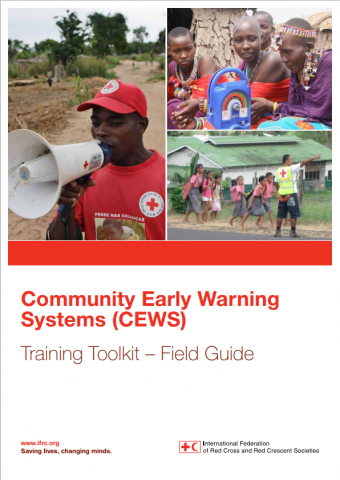IFRC Community Early Warning Systems (CEWS) Training Toolkit – Field Guide


The Training Toolkit for Community Early Warning Systems is an operational manual that aims to strengthen early warning systems in a developing country context. It accompanies and should put into practice the guiding strategic principles found in the Community Early Warning Systems: Guiding Principles.
The Toolkit is developed as a ready-to-go Training of Trainers (ToT) and Workshop manual, and is targeted to National Societies and Non-Governmental Organizations (NGOs) that are embarking on a journey either to strengthen existing CEWS efforts in a country (joining them seamlessly to national systems) or to create, from scratch, a community-driven EWS as part of a larger Disaster Risk Reduction (DRR) programme.
The Toolkit is most appropriate for use by Disaster Risk Reduction and Management (DRR/M) units or projects in support of national EWS efforts. The trainers targeted in the Toolkit (ToT portion of the training programme) are, ideally, DRR/M programme, project and partner staff members who would be responsible to guide, support or evaluate EWS efforts in at-risk communities.
